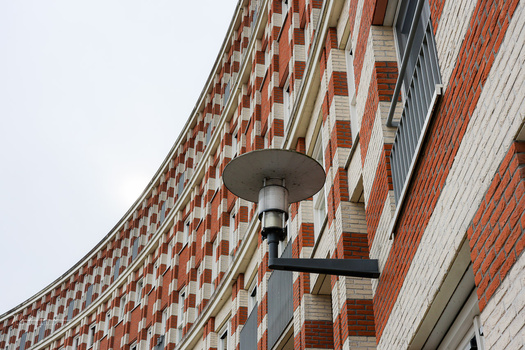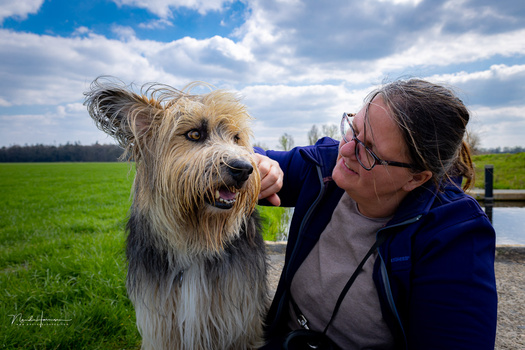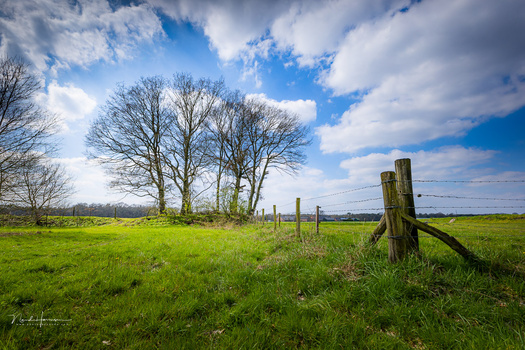The new Canon EOS R8 mirrorless camera can be considered the replacement of the older EOS R and EOS RP cameras. It promises to be a great camera at a reasonable price point. Canon Netherlands sends me this camera for a review. Let's find out how it performs.
The first Canon full frame mirrorless camera was the EOS R. Although it wasn’t a bad camera, there were some minor issues, not to mention the awful swipe button. Soon after that, the Canon EOS RP saw the daylight, a smaller and cheaper alternative.
Now Canon has released the EOS R8, which can be considered the replacement of the EOS R and perhaps the EOS RP as well. It’s a small 24-megapixel mirrorless camera with a CMOS sensor and a lot of amazing features that make it quite an interesting camera.
Some Specifications
- 24-megapixel CMOS full frame sensor
- Body, face, and eye detection and tracking for humans and animals
- Vehicle detection and tracking
- 3-inch fully articulated screen with approximately 1.62 million dots
- 2.34-million-dot OLED electronic viewfinder with 100% coverage
- 6 fps continues drive with mechanical shutter
- Up to 40 fps with electronic shutter
- Raw burst mode up to 30 fps with 0.5 seconds pre-shooting
- 4K 60p video from 6K capture with 10-bit C-log3 or HDR PQ
- False color display for movie recording
- Weighs only 461 grams, including battery
Looking at the options, the Canon EOS R8 seems to be a very capable camera indeed. It may be even a strong competitor for the Canon EOS R6 or EOS R6 Mark II. Although the latter is in a league of its own, the EOS R8 may be a perfect and much cheaper alternative.
The Camera Body
Canon made the EOS R8 a truly small and lightweight camera. It measures only 133 x 86 x 70 mm without lens and it weighs only 461 grams. Perhaps a user with big hands might find the camera a bit too small, although the grip is well proportioned.
Just like the other less expensive EOS cameras, the EOS R8 doesn’t have a dial on the back. Instead, it has a four-way button. But it does have a dial for your thumb and index finger on the top plate, as you might expect. If you prefer to have the three exposure settings accessible directly, you need to use the programmable multi-function dial on the lens for the third exposure setting.
Although you can customize many of the buttons, the M-Fn button offers a customizable quick menu that allows you to access the most important function of the camera quickly and easily. It is also possible to use the Q button for accessing most of the settings on the touchscreen.

On the left shoulder, you find a large switch to change from stills to video. The power switch itself is located around the PASM dial and offers also a lock setting in order to disable a selection of buttons and dials. The Canon EOS R8 has a nice fully articulated LCD screen that measures 3 inches with a pixel count of 1.62 million. It's the well-known touchscreen Canon offers for all its modern cameras. It can also be used for placing the AF point, which is important because there is no joystick available.

Connectivity, Battery and Memory Cards
The battery compartment is on the bottom. Is houses the smaller LP-E17 battery with a CIP rating of only 150 shots with the electronic viewfinder, and 220 shots with the LCD exclusively. This number can go up to 370 to 440 shots, depending on the energy settings. A spare battery is advised. Take note, the camera can also be charged through the USB-C port. The EOS R8 accepts one single UHS-II SD card, which is located next to the battery.

The connectivity of the EOS R8 consists of a micro HDMI port, the USB-C port, a microphone, and a headphone jack. The hot shoe has the connectors for adding additional accessories like a XLR adapter, which allows you to record a four-channel audio input in camera.

The Menu
There is not much to say about the menu. For those who are familiar with Canon, the menu won't be a surprise. It has the same layout as all other EOS models, with a good distinction between the different options. The menu can be operated by the buttons and dials or by the touchscreen.
Most used menu options can be gathered in a personal menu for quick access. If you’re less familiar with the different settings, Canon offers a help function and explanatory screens as well. Just turn these off if you don't need them. Just like most cameras at this price point, there are also a bunch of creative options available. Of course, these options are only available for in-camera JPEG capture.

Autofocus and Speed
The autofocus is responsive and finds the eyes of humans, dogs, and birds without any issue. It keeps the subject perfectly in focus during fast action, and with the high-speed settings you’ll probably capture the desired shot in most situations. Changing settings is perhaps not as fast compared to the much more expensive Canon EOS R6 Mark II, but with a bit of preparation, it shouldn’t be a problem.

The electronic shutter offers a stunning 40 frames per second. The raw burst option is limited to 30 frames per second, but it can record half a second before you fully press the shutter. This is approximately 15 shots with the 30 frames per second speed of the raw burst option. Since this option will store the images in a special file format, you are forced to extract the images before you can use it. You can choose between raw, JPEG or the 10-bit HEIF format.

With an electronic shutter, there is always a risk of the rolling shutter effect. Canon gives a warning for this risk when you activate the electronic shutter. Although a bit of rolling shutter is present, I didn’t find it too disturbing in the situations I encountered. If you want to prevent the effect all together, you need to switch to the mechanical shutter. In that case, the maximum speed will be limited to 6 frames per second.

ISO Performance and Dynamic Range
I was positively surprised by the ISO performance and dynamic range of the camera. Although it’s best to avoid an extreme recovery of dark shadows, there are situations when it’s unavoidable. I found the Canon EOS R8 to be able to recover up to four stops without any problem. You can go up to six stops if you accept a bit of noise.


At high ISO levels, the Canon EOS R8 holds up pretty well. I wouldn't have any problems with using ISO 6,400 or even 12,800. At high ISO settings, you will encounter a significant amount of noise when shadow recovery is needed. But as long as the exposure is correct, the EOS R8 will perform well.
The Canon RF 15-30mm f/4.5-6.3 IS STM

I also got an opportunity to use the RF 15-30mm f/4.5-6.3 IS STM lens. This wide angle lens is a lot smaller compared to the RF 14-35mm f/4L IS USM and much bigger RF 15-35mm f/2.8L IS USM. The lens has two switches on its side, one for turning off the stabilization, the other one for changing the behavior of the control ring. You can choose between manual focus or a function assigned in the camera menu.

This small and lightweight lens can be perfect for photographing architectural subjects or landscapes, although it's not limited to that kind of use. At 15mm focal length, normal wide angle distortion occurs, but besides that, there is not much lens distortion visible. Most of the distortion will be removed with the lens correction option activated in the camera menu, of course.
When confronted with a direct light source, some flares will be visible. This can be quite strong, depending on the position of the light source and its brightness. If you look carefully, you will notice some chromatic aberration. The lens correction of the camera will correct most of it.
If you are worrying about the maximum aperture, don't be. Most of the time, a large depth of field is used with these focal lengths. If you are planning to shoot in dark environments, this lens is not the best choice. On top of that, if there is not enough light available, the AF may show a bit of hunting. This will also depend on the AF sensitivity of the camera you're using.
My Conclusion
The Canon EOS R8 turnsw out to be an amazing camera. If you consider this camera a replacement for your EOS R and EOS RP, you don't need second thoughts. The autofocus is amazing, customizable to your needs, and it's fast enough for most action photography. The sensor performs well at any ISO setting. Just think of the EOS R8 as a mini Canon EOS R6 Mark II at a very attractive price point.
Still, the EOS R8 is not a EOS R6 Mark II. The build is less robust, and because of the small size, the buttons and dials are limited and less ergonomically placed. On top of that, you have a smaller battery with the EOS R8, only one card slot, and there is no IBIS available.
Still, the EOS R8 is an amazing camera with a full package of options that makes it enjoyable to use. You won’t miss out on options like an excellent autofocus, tracking, and the continuous speed. It also has a lot of other options, such as multiple in-camera raw exposure, time-lapse, interval, bulb-timer, and focus stacking.
Although it’s a small camera, with a limited amount of dials and buttons compared to its more expensive cousins, it turns out to be a convenient camera to use. The M-Fn menu offers the best way for quick access to the most important settings. Since there is no joystick, you have to rely on the touchscreen for placing the AF point manually.

If you are in need of a full frame camera at a reasonable price point, without giving up too much, I think the EOS R8 is a perfect camera for you. I can recommend it.
What I Like
- Good and well-designed grip
- Weather-resistant construction
- Autofocus tracking is fast and responsive
- High-speed capture up to 40 fps
- Pre-shooting available in raw burst mode
- ISO performance
- Dynamic range
- Excellent touchscreen
- Video options (although not tested)
- Focus breathing compensation
- Can be used as a webcam
What I Didn’t Like
- Battery life
- No joystick
- Memory card location next to the battery
- Position of the AF-ON button (probably due to the small form factor)
- No IBIS

How About Video?
You’ll notice how I ignored the video options. This is because I didn’t have any opportunity to try out the video capabilities. Nevertheless, a few video capabilities are worth mentioning. The Canon EOS R8 allows you to record 4K 60p video from a 6K capture. If you switch to full HD, it is possible to record up to 180p without sound.

Video recording can be done in 10-bit C-log3 or HDR-PQ, and there is the option for zebras and false color overlay. With the XLR adapter connected to the multi-functional hot shoe, it is possible to record four-track stereo audio. Unfortunately, but not surprisingly, the EOS R8 has a micro HDMI port. All in all, the EOS R8 looks to be well equipped for video.
Gallery
Purchase
You can purcahse the Canon EOS R8 here.



























I think in this day and age skipping out on ibis and the second card slot was a mistake. The R8 could have been a real contender to the Z5, which happens to be the most practical mirrorless camera to date.
A lot of people don't use dual card slots at all. It's often for more professional users, and this camera does not target that kind of photographers.
But I do agree on the IBIS, although the IS on lenses is a good alternative. Most simple lenses for these cameras have IS. Having no IBIS makes the camera smaller, light weighted, and less expensive, of course.
No IBIS make this camera useless for video or handheld slow photos with cheap lens. It's a great lack, in the year 2023. It should have some type of IBIS.
You make it sound like everyone is making handheld video, or don't want to use a tripod when slow shutter speeds are needed. Don't forget, IBIS and any other form of stabilization is just for a slight tremble of the hands of a photographer. It's won't freeze any movement of the subject. IBIS is nice, but much less useful when photographing people, for instance.
(I wonder how we even could make video or handheld photos before IBIS was a thing.:D
Everything is relative.
All people with smartphones are doing handheld video. hehehe.
And years ago didn't exist IBIS, but neither mirrorless...
You could buy an a7III which has IBIS and 2 card slots for the same money. Yes it's an older model but the next camera up from the R8 with IBIS and 2 slots, the older R6 is around $600 more brand new. We are talking about enthusiast level here so latest models may not be a priority where price is concerned.
I thought this about the G7XII as a travel video camera until I used the digital stabilisation. It's pretty good if you're in a pinch, and if you need any more you should probably have a gimbal anyway.
A mistake? Canon really wants people to buy a more expensive model, and I think that leaving out dual slots and IBIS is a good way to force a fair number of people to more costly models. Limiting it to 24 MP is also a good decision, as that will force many people to buy more expensive models, particularly those who want to print huge 4' and 6' wide prints, or crop very deeply.
I always believe you need to look at a camera from the perspective of the user it's intended for. If more sophisticated options are needed or wanted, you have to upgrade to a camera that's on a higher step in the line-up
Totally agree. It's whacked that people expect all the good features in a cheap economy camera body.
Agree, especially people wanting top video specs in entry level cameras. The main issue with the R8 though is there are other brand cameras that do have 2 slots and IBIS for similar money. A camera like the A7III might not be the latest model but for an enthusiast it could work out better value than an R8.
Unless you look at the AF ability. The R8 will outperform the A7III.
Depends on the potential buyers priorities. IBIS and two card slots plus a much greater selection of lenses may sway someone towards Sony over AF. AF on the A7III is pretty decent though.
The AF-On button could have definitely been opposite the Menu button on the right side of the EVF. I don't think the small form factor is a negative at all. It's just a dumb design choice.
I agree.
When they first announced the camera, I considered trading in my RP for it. But 50% more and no IBIS put a kibosh on that idea. Not worth the improved AF. I don't care about the second card slot, but batteries are definitely small. I have bought a lot of them, but it would be nice to have bigger batteries than carrying 4 or 5 of them.
It looks like a compelling "base model" camera of the Canon FF lineup. But the more I read these reviews, the more I think that manufacturers should do like the automakers do. There should be a base model with trim packages, where you can upgrade to IBIS, for example, in this case, if you want it, or upgrade to a large HDMI port. Maybe you want quad processors instead of one, or two card slots instead of one. But yet you really want this model. Who is to say that the arbitrary product decisions of designers at a given camera manufacturer are going to be popular? Instead of moving to an R6 II or an R5, if you love the R8 you pimp it out the way you want it. If it can't support some feature, like a battery grip, you move on to the next model.